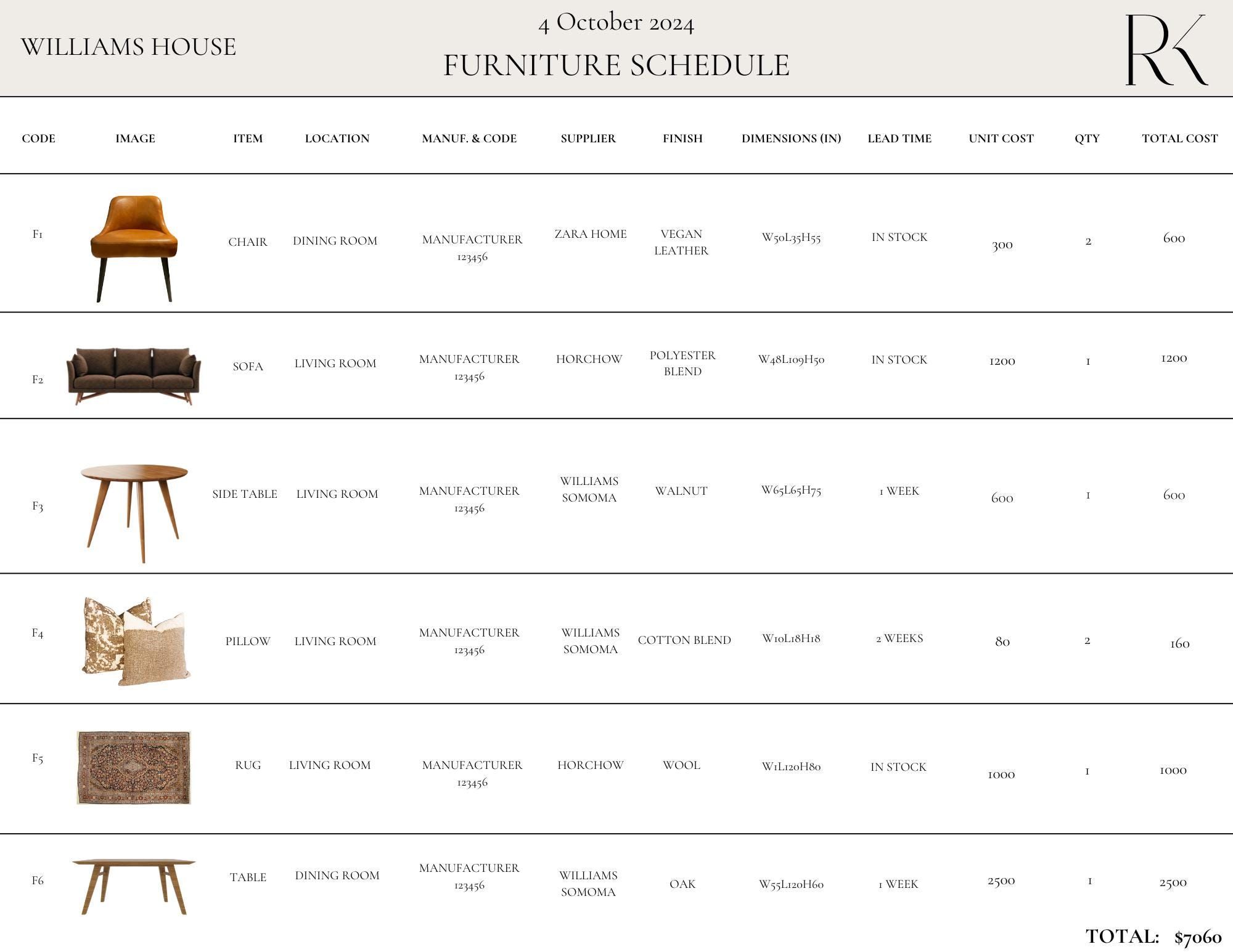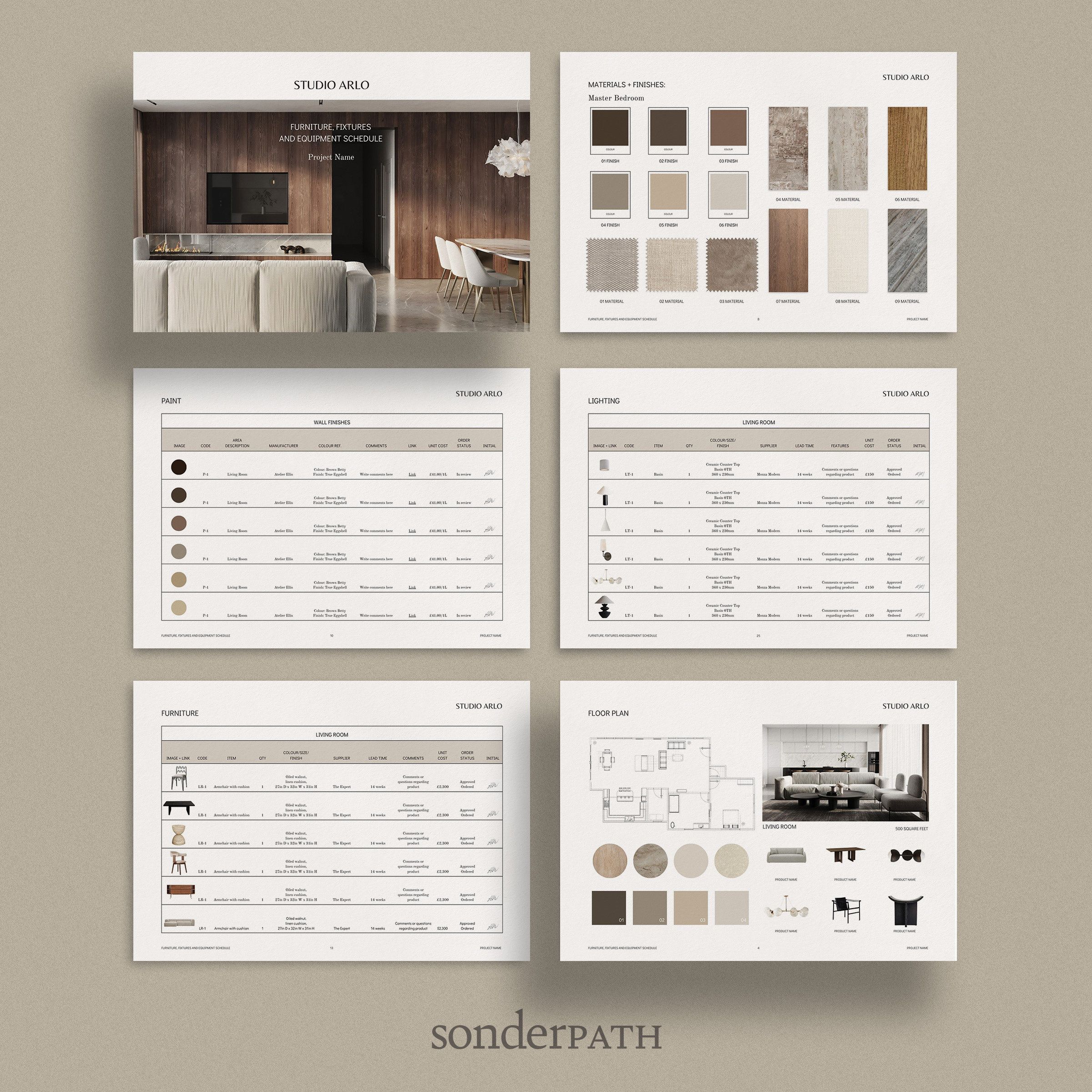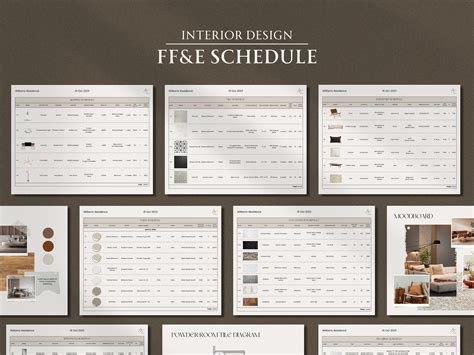Furniture Scheduling

In the dynamic world of interior design and project management, the art of furniture scheduling has become an indispensable skill. It is a meticulous process that ensures the timely delivery, installation, and coordination of furniture pieces within a project timeline. From commercial spaces to residential interiors, the efficient scheduling of furniture plays a pivotal role in the overall success and satisfaction of a project.
The Significance of Furniture Scheduling

Furniture scheduling is more than just a logistical task; it is a strategic endeavor that impacts the entire design and construction process. It involves a comprehensive understanding of the project’s scope, the lead times of various furniture manufacturers and suppliers, and the ability to coordinate deliveries and installations seamlessly. A well-executed furniture schedule can mean the difference between a smoothly running project and one riddled with delays and logistical challenges.
Consider a commercial office refurbishment project. The furniture schedule must align with the overall construction timeline, taking into account factors such as lead times for custom-made pieces, the availability of installation teams, and the potential impact of unforeseen delays. By creating a detailed furniture schedule, designers and project managers can proactively address potential issues, ensuring a smooth transition from design concept to reality.
Key Elements of an Effective Furniture Schedule

1. Comprehensive Project Understanding
At the heart of successful furniture scheduling is a deep understanding of the project’s requirements. This includes the overall design concept, the desired aesthetic, and the functional needs of the space. By thoroughly analyzing the project, designers can identify the right furniture pieces, their quantities, and their specific specifications.
For instance, in a hospitality project, the furniture schedule might involve a diverse range of items, from custom-designed seating for the lobby to unique, bespoke pieces for guest rooms. Understanding the unique requirements of each area is crucial to creating an effective schedule.
2. Manufacturer and Supplier Coordination
The furniture industry is vast, with numerous manufacturers and suppliers offering a wide range of products. Effective furniture scheduling requires close coordination with these entities. This involves not only selecting the right suppliers but also understanding their production processes, lead times, and delivery capabilities.
Let's take the example of a high-end residential project. The furniture schedule might include pieces from multiple international suppliers, each with their own production timelines and shipping requirements. By establishing strong relationships with these suppliers and maintaining open lines of communication, designers can ensure that the furniture arrives on time and meets the project's specifications.
3. Installation and Delivery Logistics
Furniture scheduling extends beyond the selection and procurement process. It also encompasses the logistics of delivery and installation. This involves coordinating with specialized delivery teams, ensuring that the furniture arrives safely and is handled with care. It may also involve coordinating with other trades on-site to ensure a seamless integration of furniture into the overall construction process.
In a retail space, for example, the furniture schedule might involve coordinating with multiple delivery teams to ensure that displays, fixtures, and seating are installed simultaneously with other construction activities. Effective scheduling ensures that the retail space opens on time, with all furniture elements in place.
Real-World Application: A Case Study
Project: Luxury Hotel Refurbishment
In a recent project, our design team was tasked with refurbishing a luxury hotel, including the guest rooms, lobby, and restaurant areas. The challenge was to create a furniture schedule that would accommodate the unique needs of each space while ensuring a seamless installation process.
| Space | Furniture Requirements | Lead Time |
|---|---|---|
| Guest Rooms | Custom-designed beds, seating, and storage | 12 weeks |
| Lobby | Statement pieces, seating arrangements | 8 weeks |
| Restaurant | Custom-made tables, chairs, and bar stools | 10 weeks |

By working closely with the hotel management and our trusted furniture suppliers, we were able to create a detailed furniture schedule. This schedule ensured that the furniture was ordered well in advance, allowing for sufficient production and delivery time. Additionally, we coordinated with a specialized installation team to oversee the process, ensuring that the furniture was installed with precision and care.
The Future of Furniture Scheduling
As the interior design industry continues to evolve, so too does the practice of furniture scheduling. With advancements in technology, designers now have access to powerful project management tools and software that streamline the scheduling process. These tools enable real-time tracking of furniture orders, lead times, and delivery schedules, providing greater visibility and control over the entire process.
Additionally, the rise of sustainable and eco-friendly practices in the furniture industry presents new challenges and opportunities for furniture scheduling. Designers must consider the environmental impact of furniture choices, from the selection of sustainable materials to the optimization of transportation and logistics to minimize carbon footprint.
Key Takeaways
- Furniture scheduling is a critical aspect of interior design and project management, impacting the overall success and timeline of a project.
- Effective furniture scheduling requires a deep understanding of the project’s requirements, close coordination with manufacturers and suppliers, and meticulous logistics planning.
- Advancements in technology and a focus on sustainability are shaping the future of furniture scheduling, offering new tools and considerations for designers.
Conclusion

In conclusion, furniture scheduling is an art and a science, requiring a delicate balance of creativity and logistical precision. By mastering the art of furniture scheduling, designers and project managers can ensure that their projects not only meet deadlines but also deliver exceptional interior spaces that delight and inspire.
What are some common challenges in furniture scheduling?
+Common challenges include varying lead times among suppliers, unexpected delays in production or shipping, and coordinating installations with other trades on-site. Effective communication and a proactive approach to problem-solving are key to overcoming these challenges.
How can technology enhance furniture scheduling processes?
+Technology, such as project management software and supply chain tracking tools, can provide real-time visibility into furniture orders, lead times, and delivery schedules. This enables designers to make informed decisions, track progress, and quickly address any potential issues.
What role does sustainability play in furniture scheduling?
+Sustainability considerations are becoming increasingly important in furniture scheduling. Designers must balance their selection of sustainable furniture options with the logistics of transportation and installation to minimize environmental impact. This requires a holistic approach to furniture scheduling that considers the entire lifecycle of the pieces.



